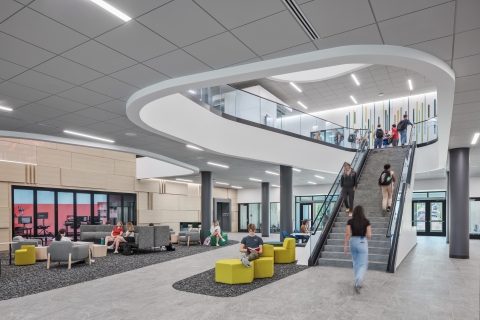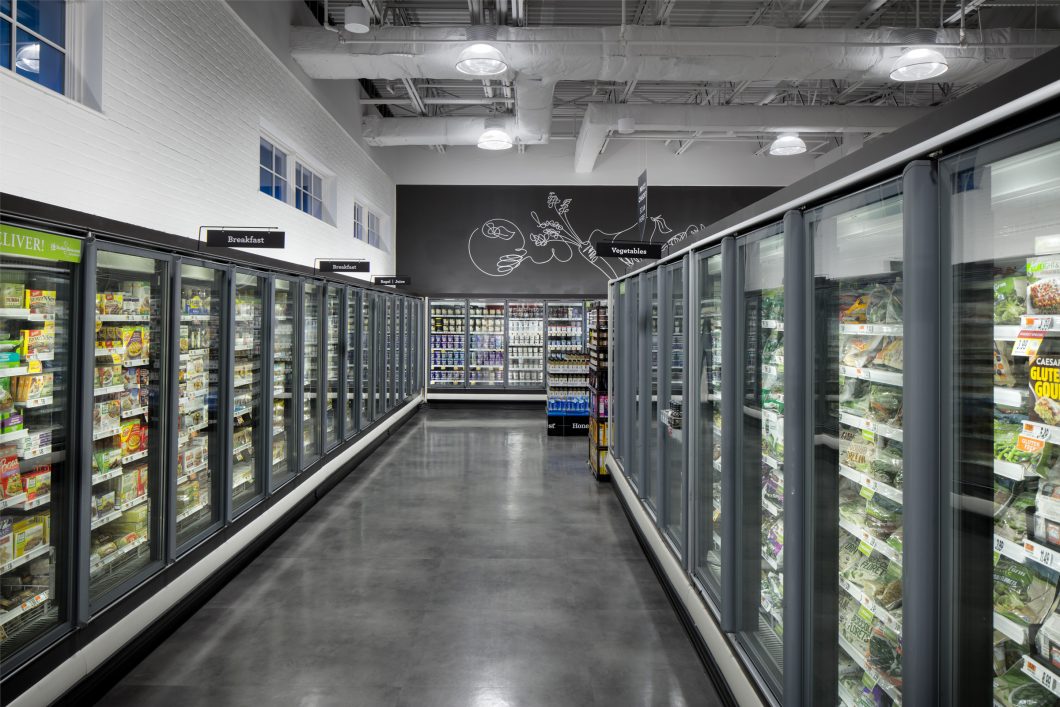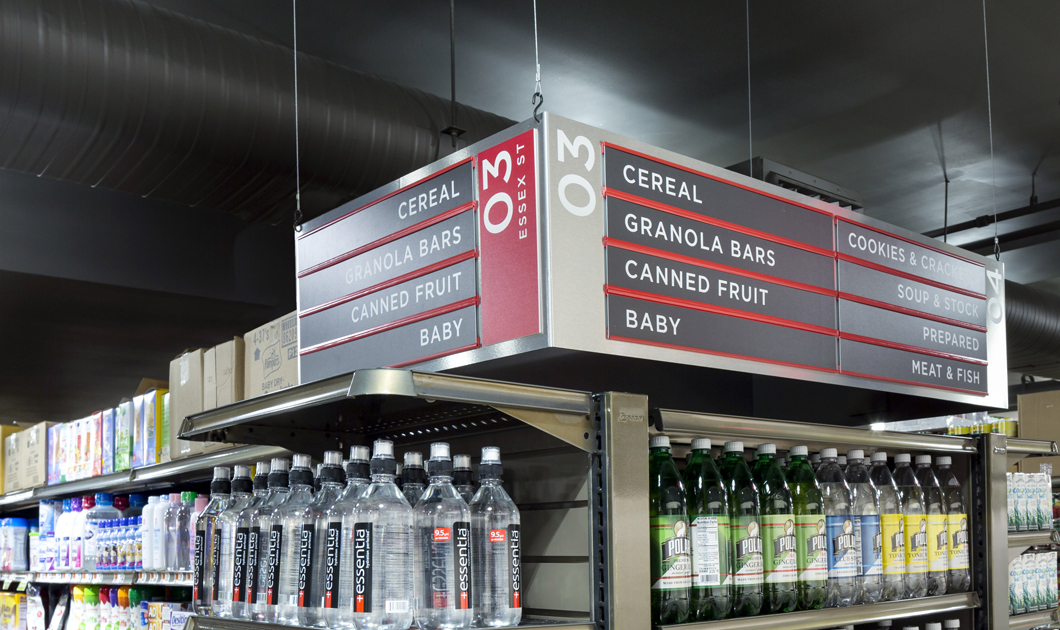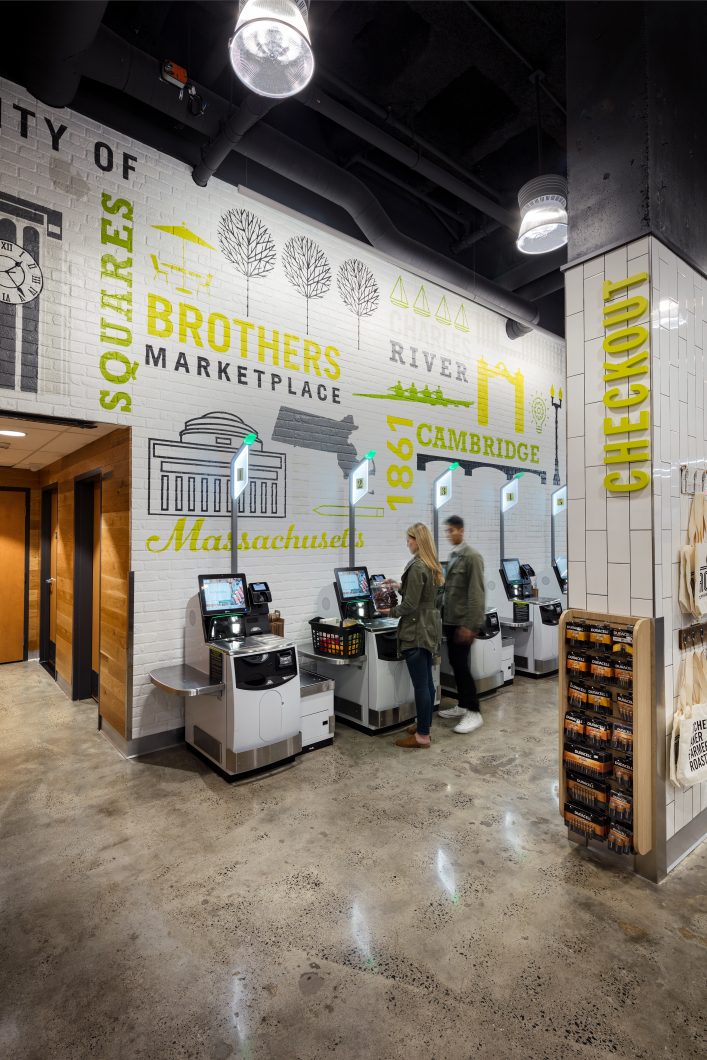
A Blueprint for the Store of the Future in the COVID-19 Era
Retailers need to consider longer-term strategies that prioritize the needs of consumers in a post-COVID-19 world, say leaders from GMDC and BHDP Architecture.

The grocery shopping experience has already undergone a transformation in recent years, but COVID-19 has created even more changes and challenges.
The COVID-19 outbreak has disrupted the grocery and general merchandise industries that are already in the midst of a digital revolution. Upending the fast-evolving norms of a shopper’s experience, the global pandemic is sending shock waves through the ways we used to go about our normal lives. While the rise of online shopping, delivery services, mobile checkouts, buy online, pick up in store (BOPIS), channel blurring and more have already permeated the shopping experience, the industry could not have anticipated the seismic shift in that direction the crisis has caused. With the pandemic altering many traditional and new habits, the consumer of tomorrow will undoubtedly see their perspective shift from a pre-COVID-19 to post-COVID-19 lens when buying products and services.
Online shopping has been dominating the retail industry for years, but according to Adobe’s Digital Economy Index, online grocery sales surged 49% in April following nationwide lockdowns in response to the virus’ outbreak. By default, these numbers are unsurprising as shoppers have been isolated at home and feel more comfortable selecting products online in an effort to mitigate the risk and exposure to others. So, how will retailers work to maintain this positive trend and ensure their shoppers feel comfortable being inside a store?
Navigating Our “New Normal”
First, we must look into what shoppers once considered “normal,” and why we are calling the post-COVID-19 world a “new normal.” While the retail industry was undergoing a transformation before the pandemic hit, the digital revolution will continue to accelerate, introducing the store of the future much sooner than we originally anticipated.
As the outbreak began, grocery stores were deemed essential and remained open for business. Although grocery stores experienced a decline in foot traffic, consumer shopping habits have varied greatly over the past months, and more changes are likely to occur throughout the course of the pandemic. Despite changes in behavior, stores worked quickly to ensure consumers felt safe with the implementation of personal protective equipment, in-store shopper count limitations, aisle and checkout floor markings, and social distancing guidelines.
Shoppers entering a store within the past 60 days have observed protocols put in place in an effort to minimize the risk factors of contracting the virus. Common practices include employees and consumers wearing masks and standing in staggered checkout lines with 6 feet between each customer, and often only every other lane is open despite long lines. Store employees are diligent about disinfecting carts, baskets and registers, and some stores have protective plexiglass added to shield cashiers.
These short-term changes have, for the most part, been implemented in some form or another. As we enter our “new normal,” many practices will remain in place for the foreseeable future while some stores may choose to strengthen guidelines and implement more permanent changes. For example, the directional aisle approach may help regulate the pace at which a consumer shops, staggering and limiting human contact even more. But this tactic also has the potential to negatively impact the shopping experience, impeding a consumer’s path toward his or her desired products.
To maintain consumer loyalty, stores and brands will need to change their game and seek new ways to enhance the customer experience that have not yet been invented today.

From compartmentalizing certain parts of the store to adjusting colors used in the décor (like in this store signage), there is an opportunity to lower shopping anxiety.
Examples of these solutions include click and collect and BOPIS, or curbside solutions. Thirty-five percent of all shoppers began using these methods for the first time over the past two months and do not have plans to return to shopping the way they used to. To maintain consumer loyalty, stores and brands will need to change their game and seek new ways to enhance the customer experience that have not yet been invented today.
Testing and learning how to navigate new innovations must be at the forefront of every conversation inside each retail chain that is still open for business. Many pickup and staging areas are located off to the side of the store, in areas that are not always aesthetically pleasing or consumer friendly. To improve the experience of customers using this option, it is recommended that brands re-evaluate an on-site pickup presence that feels less like an afterthought and more like an intentional design that is comfortable and clean.
While short-term solutions in the retail and grocery industries have proven to be effective, it will take more permanent design decisions for the industry to adapt to the new psychological and public health changes we’re experiencing in the face of a global pandemic.
For the anxious consumer in our new world, stores and brands will need to prioritize the shopper experience and journey, from the moment they get into the car to arriving back home.
Innovating to Promote Health & Safety
Now that consumers are beyond the immediate reaction to the impacts of government-mandated quarantine in many regions that included panic buying, hoarding and inconsistent shopping habits, it is time for stores to consider longer-term strategies that will remain relevant and prioritize the health and mental well-being of consumers in a post-COVID-19 world.

Stores must evaluate how people check out and pay, and that could mean more self-checkout kiosks—like these ones at Brothers Marketplace in Cambridge. Brothers Marketplace
These longer-term strategies will include innovations ranging from HVAC improvements to increase humidity in the air, to visible filtration systems across the entire store, new UV lighting solutions, the creation of a certification program for cleanliness and sanitation, and touchless or contact-free shopping.
For the anxious consumer in our new world, stores and brands will need to prioritize the shopper experience and journey, from the moment they get into the car to arriving back home.
Store designers must reassess how and where products are presented by looking through the eyes of the shopper. From compartmentalizing certain parts of the store, to designing shelves with rounded corners and adjusting light levels or colors used in the decor, stores have an opportunity to significantly lower their shoppers’ level of anxiety as soon as they enter the premises.
With anxiety now a commonality among many consumers, there are various aspects of a store that will change both in the short and long term, and may even become permanent based on their positive impacts on the consumer experience. Hygienic practices, social distancing and re-evaluating how people check out and pay by offering more self-checkout kiosks and touchless technology are here to stay because our behaviors will be permanently changed.
In response to consumer demands and concerns for overall health and well-being, the store of the future will look unlike anything the industry has ever imagined, and chances are, it will be here to stay.
The Lasting Impacts of COVID-19
In this first phase of the pandemic, stores have responded swiftly and shown great resilience in responding to the demands and consumer needs. Now, this trajectory must continue, with the industry acting agilely to get ahead of consumer concerns rather than standing idly by awaiting government regulations to mandate behavior.
Retailers must consider their consumers’ hierarchy of needs and quickly begin designing spaces for their consumers that promote cleanliness, reduce risk and temper anxiety. The prioritization of consumer values now is safety, accessibility, reliability and transparency.
In response to consumer demands and concerns for overall health and well-being, the store of the future will look unlike anything the industry has ever imagined, and chances are, it will be here to stay.
This article was originally published in Supermarket News.
